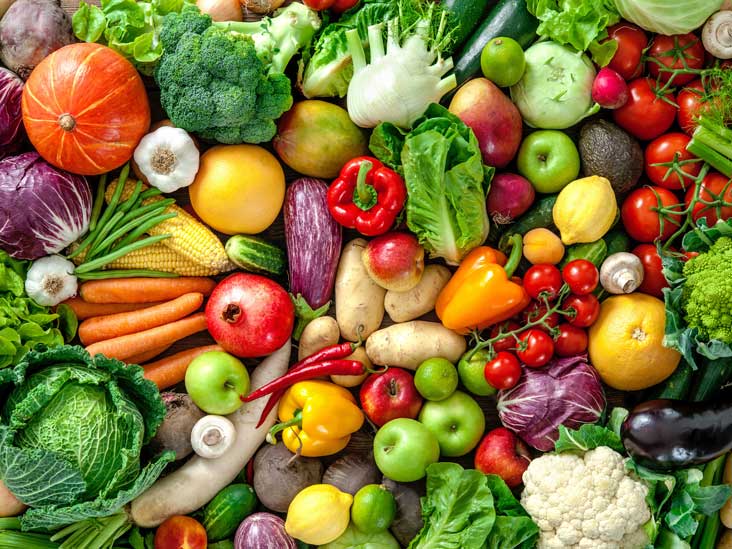Source: Thailand Medical News Dec 28, 2019 5 years, 11 months, 4 weeks, 2 days, 4 hours, 51 minutes ago
University Of Texas Southwestern researchers report that animal models fed a
plant-rich diet are less susceptible to
gastrointestinal (GI) infection from a pathogen such as the one currently under investigation for a widespread
E. coli outbreak tied to romaine lettuce. A strain of
E. coli known as EHEC, which causes debilitating and potentially deadly inflammation in the colon with symptoms such as bloody diarrhea and vomiting, is implicated in several
foodborne outbreaks worldwide each year.

Dr Vanessa Sperandio, Ph.D., Professor of Microbiology and Biochemistry at UT Southwestern told
Thailand Medical News, "There has been a lot of hearsay about whether a
plant-based
diet is better for intestinal health than a typical Western
diet, which is higher in oils and protein but relatively low in fruits and vegetables. So we decided to test it."
She added, "
Plant-rich diets are high in
pectin, a gel-like substance found in many fruits and vegetables.
Pectin is digested by the gut microbiota into
galacturonic acid, which we find can inhibit the virulence of EHEC. This is relevant to public health because EHEC outbreaks lead to hemorrhagic colitis, which is debilitating and sometimes causes death, particularly in the very young and the elderly.”
Typically intestinal
pathogens like EHEC sense the complex chemistry inside the GI tract to compete with the gut's resident
microbiota to establish a foothold, Dr Sperandio says. Over centuries, the
pathogens have developed different strategies to compete against the so-called good, or
commensal, microbes that normally line the gut.
Those beneficial commensals include harmless strains of
E. coli living in the colons of humans and other mammals, where they help the host's normal digestion process, she adds. The word
commensal means "eating at the same table" and that is what the symbiotic bacteria that make up the gut's microbiota do.
The normal
commensals that line the gut present a significant barrier to intestinal
pathogens, Dr Sperandio explains. EHEC and similar gram-negative bugs overcome that barrier by deploying a secretion system called T3SS.
The T3SSs act like molecular syringes to inject a mix of virulence proteins into the cells lining the host's colon, setting off inflammation and symptoms of
infection. Because mice are unaffected by EHEC, researchers use a similar
pathogen, Citrobacter rodentium, in mouse studies, Dr Sperandio explains.
She further commented, adding that the two
types of
E. coli may have evolved to avoid competing for the same energy sources, "Our study finds first that the good
E. coli and the pathogenic ones like EHEC use different sugars as nutrients. Second, we find that dietary pectin protects against the pathway the pathogenic EHEC uses to become more virulent."
A certain type of
commensal gut bacteria breaks down dietary
pectin from fruit and vegetables, creating
galacturonic acid, a sugar acid that the EHEC and C. rodentium use in two ways. Initially, the
pathogen uses that sugar acid as an energy source to expand in the gut, Dr Sperandio says.
She added, "Once the sugar acid becomes depleted, the pathogen changes its survival strategy, almost like flipping a switch."
Instead of using the
galacturonic acid for nourishment, the infectious bacteria employs it in a signaling pathway that increases the EHEC's and similar bacteria's virulence using the syringe-like T3SS.
The research showed that mice fed
pectin for about a week withstood infection. Comparing the colons of six mice fed a chow diet with 5 percent extra pectin from citrus peel with four mice on a typical diet, the researchers found a much lower rate of
infection in the
pectin-eating mice, Dr Sperandio says.
The detailed amount of bacteria in the mouse gut was measured by daily stool checks and by analysis of the amount of bacteria in a pouch at the juncture of the small and large intestines, called the cecum, at the experiment's end.
The medical researchers found that mice on the
pectin-enriched chow had about 10,000 bacteria in the cecum compared to 1 million bacteria in mice on the typical diet. The pectin group also had fewer symptoms, she says, adding that a
pectin level of 5 percent appears to prevent the
pathogen from activating its virulence repertoire.
Dr Sperandio stressed that the research is one step in a journey to define the molecular mechanisms that govern how the
commensal species in the gut impact the virulence of intestinal
pathogens.
She added, "This is not translatable to humans yet. We hope a better understanding of how intestinal disease develops will lead to strategies to reduce the incidence or, at least, the symptoms caused by these gram-negative
pathogens, possibly through new vaccines or drugs."
Reference : Diet-derived galacturonic acid regulates virulence and intestinal colonization in enterohaemorrhagic Escherichia coli and Citrobacter rodentium, Nature Microbiology (2019). DOI: 10.1038/s41564-019-0641-0 ,
